
What are the fitness tips for women in their 30s ?

Your 30s are a crucial decade for your body, and a lot of the choices you make now could affect how you feel in the future.
Women in their 30s should be physically active since it promotes good general health, reduces stress, and guards against age-related illnesses.
Listed below are some fitness advice for women in their 30s: -
Strengthen their bones:
Around the age of 30, both men and women undergo a decline in bone density that leads to osteoporosis, a condition of the bones that causes them to lose mass and break easily. However, because women have smaller bones than males, it typically affects more women than men.
Three nutrients—calcium, vitamin D, and potassium—can support the regrowth of bone mass. Discuss with your doctor how you can maintain a high bone mass by getting enough exercise and nutrition.
Begin moving:
To maintain a healthy weight, lower your risk of type 2 diabetes, enhance your mental health, and keep your heart healthy, you should engage in at least 30 minutes of moderate activity most days of the week and two to three days of intensive exercise.
Concentrating on preventive care:
Although your 30s may be the prime of your life, this is also the decade in which you should begin getting examined for several significant health issues. In addition to helping you avoid sickness and illness altogether, preventive care can also help you save money and time.
To make sure you maintain good health, your doctor might perform a number of medical tests. A Pap smear and screens for glaucoma, diabetes, cholesterol, blood pressure, and breast cancer are among the possible tests. In the future, your doctor will also assist you in deciding how frequently you should be examined for these potential issues.
Observe your weight:
As you become older, your metabolism slows down, and hormone fluctuations can lead to weight gain. If you are worried about your weight, discuss methods to get to a healthy weight with your doctor. The moment has come to adopt a balanced diet, embrace your inner chef, and stop grabbing late-night fast food.
Check your hormone levels:
According to recent data, 80% of women suffer the negative effects of hormonal imbalance, especially when it comes to the female hormones estrogen and progesterone.
You may suffer symptoms such as pelvic pain, fibroids, heavy or irregular periods, anxiety, weight fluctuations, mood swings, and more when these two hormones are out of balance. A chronic illness like endometriosis or polycystic ovarian syndrome may also show symptoms of abnormal levels. Your doctor can help you stay healthy and keep you informed about how your body is working by checking your hormone levels.
Give to yourself:
Statistics show that around one-third of Americans experience chronic stress. High blood pressure, heart disease, obesity, and diabetes are all risks that are increased by stress.
You can manage your stress by rewarding yourself with self-care activities, relaxation, and mindfulness exercises. Don't be afraid to take care of your basic requirements, such as obtaining at least seven to nine hours of sleep each night, even with everything on your to-do list.
Remember to put yourself and your health first so that you can continue to perform at your best. You are a successful and industrious lady with numerous roles to fulfil.
Prioritize strength training:
Give weightlifting or resistance training activities a higher priority in your fitness regimen. In addition to boosting metabolism, adding lean muscle mass strengthens bones, lowers the chance of injury, and enhances overall body composition. Make an effort to work diverse muscle groups throughout at least two to three sessions every week.
Include cardiovascular exercise:
Take part in aerobic activities like jogging, swimming, cycling, dancing, or brisk walking. Cardiovascular activity helps maintain a healthy weight while also enhancing endurance and heart health. Aim for at least 150 minutes per week of aerobic activity at a moderate intensity or 75 minutes at a high intensity.
Include flexibility and mobility exercises:
Exercises that enhance flexibility and mobility should also be included because they also help to prevent muscular imbalances and injury risk. Include workouts like yoga or Pilates.
Pay attention to core strength:
Keep your core muscles strong since they help to stabilize and support your entire body. To enhance posture and safeguard the lower back, incorporate core-focused workouts like planks, Russian twists, or stability ball exercises.
Discover activities you like:
Take part in enjoyable and long-lasting activities. This could be participating in group exercise courses, dancing, hiking, or playing a sport. You are more likely to persevere over time if you enjoy the activity.
Eat mindfully:
A healthy diet is crucial for fitness and overall well-being. You should put your attention on eating a diet that is well-balanced and contains lean proteins, whole grains, fruits, vegetables, and healthy fats. Steer clear of alcohol, extra sugar, and overly processed foods. Drink lots of water to stay hydrated.
Prioritize recovery and rest:
Give your body adequate time to recover between workouts by putting recovery and rest first. Incorporate rest days into your workout regimen, and pay attention to your body's cues. This lessens the chance of becoming injured, prevents burnout, and promotes general wellbeing.
Manage stress:
While exercise is a great way to reduce stress, it's equally crucial to include other stress-reduction strategies in your daily routine. Engage in relaxing and stress-relieving activities or practice mindfulness, meditation, deep breathing, or other relaxation techniques.
Sleep sufficiently:
Aim for seven to nine hours of good sleep each night. A healthy weight may be maintained and your body's healing process is supported by getting enough sleep. It also improves mental clarity.
Regular health check-ups:
Schedule routine check-ups with your doctor to discuss any concerns, maintain your general health, and get the necessary screenings or tests completed.
Before beginning any new fitness program, it's crucial to speak with a medical expert or trained fitness trainer, especially if you have any underlying medical issues or injuries. They may offer you individualized guidance based on your unique needs and objectives.
Include high-intensity interval training (HIIT):
HIIT workouts, which feature brief bursts of intensive exercise followed by times of active recovery, should be included. Adding HIIT to your regimen can speed up your metabolism, improve your cardiovascular health, and save you time. Exercise variations include burpees, jumping jacks, and sprints.
Set precise objectives:
Make a plan to reach your fitness objectives after defining them. Setting specific objectives can help with direction and motivation, whether your goal is to run a 5K, gain strength, or reduce your weight. To maintain motivation and monitor your progress, break larger goals down into more manageable milestones.
Maintain consistency:
When it comes to fitness, consistency is essential. Make exercise a priority in your schedule and try to build a regular regimen. Even if you have limited time, you can still improve your overall fitness with quick workouts or active breaks throughout the day.
Mix up your workouts:
By diversifying your workouts, you can prevent falling into a fitness rut. Try a variety of workouts, such as circuit training, kickboxing, swimming, or outdoor sports like cycling or hiking. By changing up your routine, you keep your body engaged and avoid monotony.
Exercise your pelvic floor:
As women become older, it's critical to strengthen the muscles that assist bladder control to guard against problems like urine incontinence. Include exercises that strengthen the pelvic floor muscles, such as Kegels or Pilates.
Stay hydrated during workouts:
Keep yourself well hydrated during your workouts for optimum performance and recuperation. Before, during, and after exercise, drink water to replenish fluids lost through perspiration. Although the precise quantity of water required varies, aim for about 8 cups (64 ounces) per day.
Support your mental health by exercising:
It has great effects on both your physical and mental wellbeing. Take part in stress-relieving and mood-enhancing activities, such as mindfulness exercises, time spent in nature, or group fitness programs that promote social interaction.
Strength training should be incorporated for bone health:
Women in their 30s should concentrate on preserving bone density. Incorporate weight-bearing workouts into your routine, such as running, stair climbing, or resistance training, to strengthen your bones and lower your risk of developing osteoporosis in later life.
Warm up and cool down properly:
Warm up your muscles with dynamic stretching or light aerobics before working out to improve blood flow and get your body ready for activities. Stretching statically afterward will increase flexibility.
Stay motivated and have fun:
Discover techniques to maintain motivation and delight in your fitness journey. Establish incentives for reaching your objectives, locate a workout partner for accountability, or enroll in fitness challenges or programs that interest you. Fitness becomes a sustainable lifetime habit when you make it pleasant.
Everybody's path to fitness is different. Pay attention to your body's signals, acknowledge its limitations, and adjust as necessary. Be consistent, remain upbeat, and acknowledge your accomplishments as you go.
Adopt functional fitness:
Include activities that replicate the movements you make every day. This includes exercises that increase stability, balance, and total functional strength, such as squats, lunges, and planks.
Mind-body activities:
Consider incorporating mind-body exercises into your program, such as Pilates, yoga, or tai chi. These exercises encourage mindfulness, increase flexibility, heighten body awareness, and aid with stress management.
Posture awareness:
Being conscious of your posture during the day is important, especially if you have a desk job. To avoid muscle imbalances, keep a strong core, and lower your risk of back and neck problems, maintain proper posture while sitting, standing, and exercising.
Include resistance bands:
Resistance bands are adaptable and portable fitness equipment that can provide your workouts diversity and challenge. Strength, flexibility, and stability are all benefits. They can be utilized for exercises for the upper and lower bodies.
Find ways to stay active outside of the gym: Look for activities to engage in throughout the day. Instead of using the elevator, use the stairs, go on short walks or bike rides, or go outside and play with your kids or garden.
Observe your body:
During activity, pay attention to any discomfort or pain. Modify the exercise if something doesn't seem right, or ask a fitness expert for advice. Respecting your body's limitations will help you stay injury-free and prevent overtraining.
Practice self-care:
Self-care is a practice that extends beyond physical activity. Spend some time relaxing activities, including taking a bath, doing deep breathing exercises, or engaging in a pastime. Setting self-care as a priority enhances overall wellbeing and reduces stress.
Include upper body strength training: Women often possess less upper body strength than men. Push-ups, dumbbell rows, and shoulder presses are examples of upper-body workouts that can aid with posture, upper-body strength, and bone health.
Track your progress:
Keep a log of your workouts, measurements, and accomplishments to track your development. You can maintain motivation and realize how far you've come by keeping track of your progress. It also enables you to pinpoint areas in which your training regimen needs development or modification.
Stay positive and be patient:
Remain upbeat and patient since development in fitness takes time. Be kind to yourself and acknowledge your progress by celebrating each little success. Instead of concentrating only on physical changes, think about the positive ones you're making for your health and wellbeing.
These are only general recommendations, so pay attention to your body and get advice from experts as necessary. Take pleasure in caring for yourself, and accept the benefits of fitness for your overall well-being.
Include variety: Use a range of exercises and training techniques to keep your workouts interesting and demanding. Try varied exercise methods, such as Tabata, interval training, or circuit training. This keeps you engaged, activates various muscle areas, and helps prevent plateaus.
Practice active lifestyle habits:
Develop healthy lifestyle patterns by finding methods to include exercise into your daily schedule. If your employment is sedentary, take breaks to stretch and move around. whenever possible, use an active mode of transportation, such as biking or walking. Instead of using the elevator, use the steps.
Find a group or a workout partner:
Joining a fitness group or exercising with a friend can offer social support, accountability, and encouragement. It can help you stick to your exercise regimen and make working out more fun.
Gradually up the intensity of your workouts:
As your fitness level increases, gradually up the intensity of your workouts. Increase your level of difficulty by using heavier weights, adding more resistance, or working a little harder during your cardio workouts. Gains in strength and endurance are encouraged by this incremental overload.
Give recuperation and rest days top priority:
These are necessary for optimum performance and injury avoidance. To give your body time to recover and regenerate, plan regular rest days. Incorporate stretching, yoga, or foam rolling into your routine to help your muscles recuperate and feel less uncomfortable.

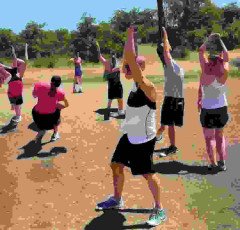





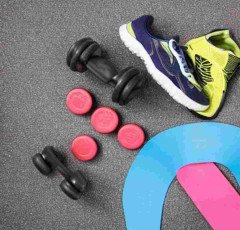




















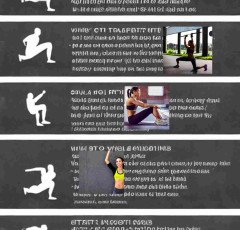




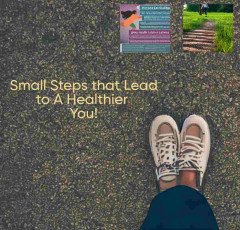






































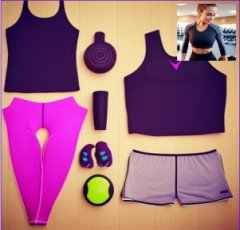














 Unlimited access to classes on illustration, photography, design, film, music
Unlimited access to classes on illustration, photography, design, film, music  Air Purifier for Home
Air Purifier for Home  Kitchen Tap
Kitchen Tap  Rakhi
Rakhi  Motion Sensor Light
Motion Sensor Light  Stylish Sneakers by Red Tape
Stylish Sneakers by Red Tape  Wireless Bluetooth Earphones
Wireless Bluetooth Earphones  Hot Bags For Pain Relief
Hot Bags For Pain Relief  Essentials for Gamers
Essentials for Gamers  Digital Voice Recorder
Digital Voice Recorder  Artificial Intelligence
Artificial Intelligence  4k Projector For Home
4k Projector For Home  HP Laptop
HP Laptop  Wireless Gaming Mouse
Wireless Gaming Mouse  The Click Engine
The Click Engine  TitTok Revolution
TitTok Revolution  Wristbands
Wristbands  Door Handle Collection
Door Handle Collection  The Secret Email System
The Secret Email System  One World Collection
One World Collection  Hanging Lights For Living Room
Hanging Lights For Living Room  Online Technology Classes
Online Technology Classes  Sennheiser
Sennheiser  Pet Care Products
Pet Care Products  Echo Dot - Smart speaker with Alexa
Echo Dot - Smart speaker with Alexa  Dell Laptop
Dell Laptop  Realme Smart Phone
Realme Smart Phone  Top Rated From Amazon
Top Rated From Amazon  Favorite Company (Cuelinks)
Favorite Company (Cuelinks)  Acer Laptop
Acer Laptop  Online Marketing
Online Marketing  Best Robotic Vacuum Cleaners
Best Robotic Vacuum Cleaners  ELECTRONIC ACCESSORIES
ELECTRONIC ACCESSORIES  Smart Watches
Smart Watches  NordPass
NordPass  Adidas Shoes
Adidas Shoes  Wall Lamp
Wall Lamp  Women Fashion
Women Fashion  Best Home Appliances
Best Home Appliances  Dual USB Car Charger
Dual USB Car Charger  Best Selling Books
Best Selling Books  Bathroom Mirrors
Bathroom Mirrors  Creative Brief For Video Shoot
Creative Brief For Video Shoot  Puma (Clothing & Accessories)
Puma (Clothing & Accessories)  NordVPN
NordVPN  ASPINAL LONDON
ASPINAL LONDON  Crocs
Crocs  Amazon Best Selling Products
Amazon Best Selling Products  Healthy Ingredients
Healthy Ingredients  SEO Checklist
SEO Checklist  1150+Trendy kids coloring pages Bundle
1150+Trendy kids coloring pages Bundle  Home Decor Items
Home Decor Items  LCD Writing Tablet
LCD Writing Tablet  Men Clothing
Men Clothing  Unreal Engine 5 For Beginners Learn The Basics Of Virtual Production
Unreal Engine 5 For Beginners Learn The Basics Of Virtual Production  Best Sellers On Amazon
Best Sellers On Amazon  iPhone cable
iPhone cable  Apple iPhone
Apple iPhone  Only For The United States
Only For The United States  Prime Video
Prime Video  Duke T Shirts
Duke T Shirts  BEST SELLER TOP10
BEST SELLER TOP10  Hello Theme
Hello Theme  Samsung Mobile
Samsung Mobile  NordLocker
NordLocker  Kitchen Daily Use
Kitchen Daily Use  Smart Doorbell
Smart Doorbell  Best Phone
Best Phone  RPM 3.0
RPM 3.0  All Wireless Products
All Wireless Products  ASUS Laptop
ASUS Laptop  SOFAS
SOFAS  Graphics & Design
Graphics & Design 


















